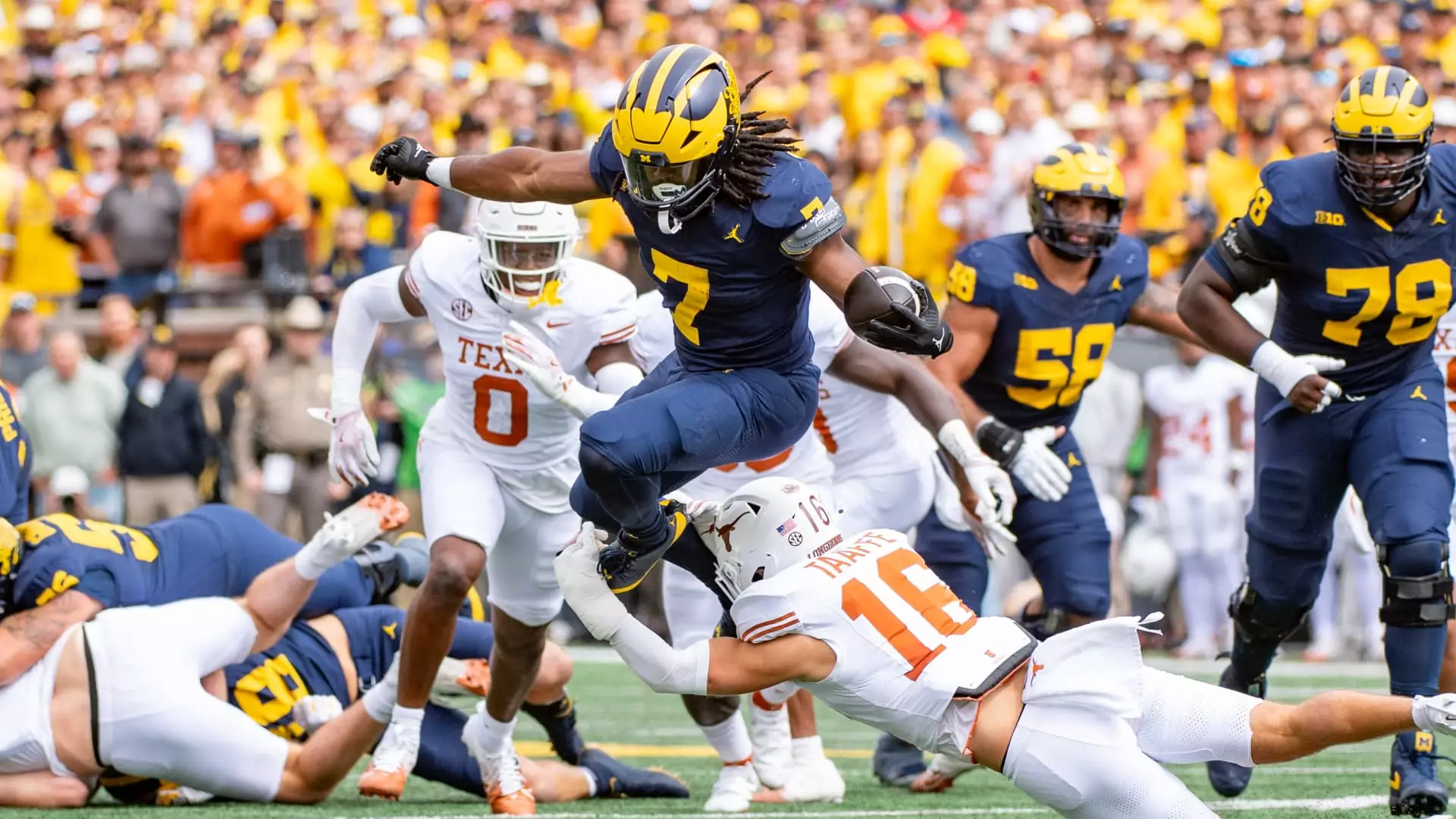The 2023 season has ushered in a seismic change within the realm of college football. With the introduction of a 12-team playoff format, a wider array of teams and their supporters have become engaged in the action, fundamentally altering the landscape of college football viewership. Disney, which operates major broadcasting outlets such as ESPN, ABC, and ESPN2, is experiencing a resurgence in viewership numbers this year, marking it as potentially their most successful season since 2016. The enhanced stakes created by this expanded playoff system are playing a crucial role in this outcome.
This exciting new format not only increases the quantity of games available to view but also enriches the narrative surrounding those games throughout the season—making them more significant in the eyes of fans. Disney has effectively leveraged this shift to boost ad engagement levels, with preliminary data suggesting that commercials aired during college football games are enjoying heightened interaction rates. As fans gear up for the climactic Thanksgiving weekend, which is ripe with historical rivalries and pivotal matchups, the anticipation for both ratings and ad engagement has never been higher.
Kevin Krim, CEO of EDO, emphasized the connection between game significance and ad engagement metrics, suggesting that heightened importance leads to greater viewer interaction. With iconic rivalries such as Ohio State versus Michigan and Texas against Texas A&M set to unfold, the implications for season standings and Bowl game outcomes are monumental. The overwhelming excitement and passion that saturate these matchups bolster the entire operation, resulting in an important nexus between game significance, viewer engagement, and advertising effectiveness.
The voting decision made by university presidents to expand the playoff system from four to 12 teams in 2022 has proven to be beneficial not only for the teams involved but for media companies like Disney, too. The result? More games that matter, more viewers tuning in, and ultimately, more engagement during commercial breaks. In particular, Jim Minnich, a senior vice president within Disney’s advertising sector, noted the exceptional achievements and record-breaking viewership their college football segment has realized this season, highlighting its significance in the broader context of their media portfolio.
The statistics released so far illustrate a compelling story for Disney’s broadcasting networks. ABC, in particular, stands out, asserting itself as a powerhouse in college football ratings, with predictions indicating the highest viewer numbers since 2009. More than 80% of the most-watched games this season have aired on ABC, showcasing its dominance in conveying college football narratives.
Moreover, according to EDO, there has been an 11% uptick in consumer engagement with advertisements aired during college football games across Disney networks when juxtaposed with competitors in the prime-time broadcast landscape. This translates into a unique opportunity for advertisers, as consumers are increasingly motivated to respond to what they see on-screen. Particularly during holiday game weekends, ad performance is expected to receive another boost, highlighting the untapped potential that lies within live sports broadcasts.
While Disney’s achievements in advertising revenue are promising, they come at a time when the media industry is contending with challenges related to shifting consumer behavior. The general public is increasingly opting for streaming services, resulting in dwindling viewership for traditional pay-TV bundles. Despite these challenges, Disney appears reasonably well-positioned, with high demand for ad placements and a willingness from advertisers to secure prime spots early in the season—a trend noted by Minnich and his team.
Their strategy in securing 90-95% of ad slots for crucial playoff games underscores a strong selling point for the relevance of college football in a time of considerable uncertainty in the media sector. As live sports continue to be a bedrock for TV viewership, they will remain an invaluable asset to Disney, which secured rights to Southeastern Conference games, further enhancing its potential ad revenue.
With media rights witnessing an exponential increase in value, Disney’s investment strategy seems poised for continued growth. The company has entered into significant contracts, such as a six-year broadcasting deal worth $7.8 billion that spans through the 2031-32 season, affirming the ongoing viability of college football as a lucrative advertising platform. Blizzard-like competition for broadcasting rights among other network competitors, including Paramount’s CBS Sports and Comcast’s NBC Sports, adds yet another layer of depth to the ongoing evolution of sports broadcasting.
As the dust settles on a remarkable start to the new playoff format, both Disney and its advertisers are reaping the benefits. In an era where sports viewership is not only a chance for entertainment but also a substantial part of the advertising ecosystem, college football is cementing its place as one of the most impactful platforms for media companies in today’s dynamic landscape. Ultimately, by navigating these changes astutely, Disney is positioned to sustain and even amplify the enthusiasm around college football in the coming years.

